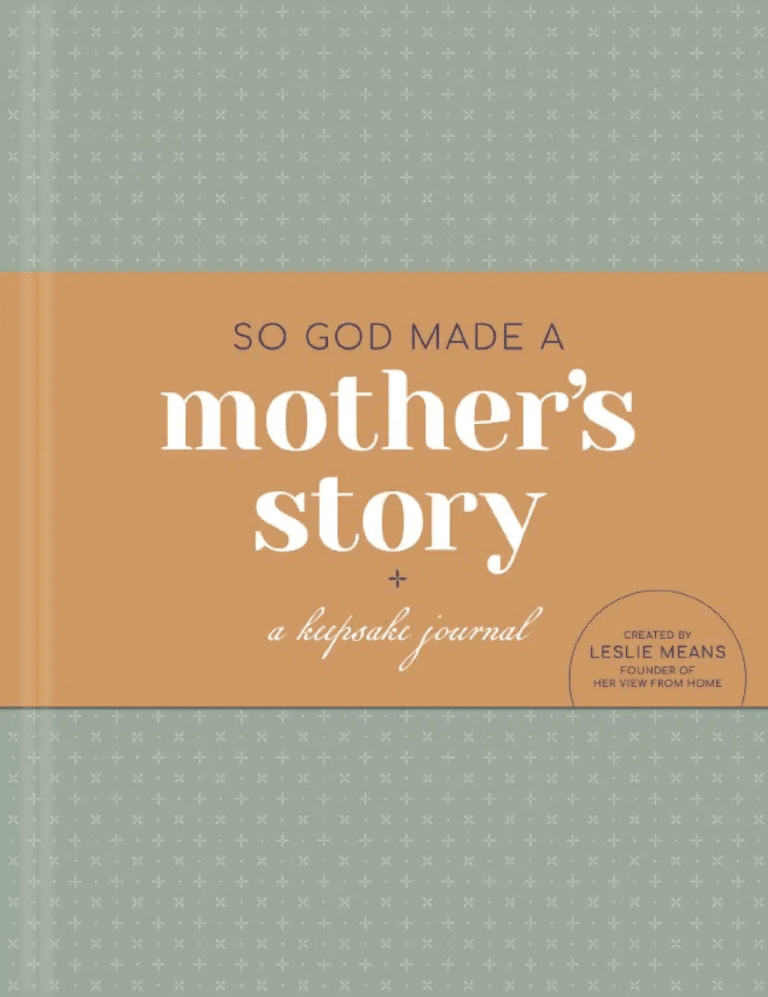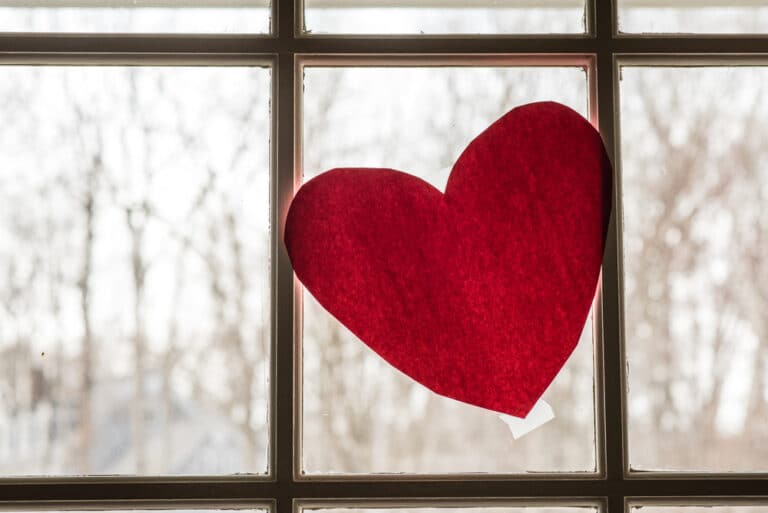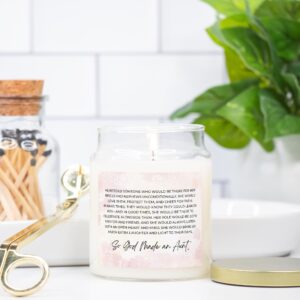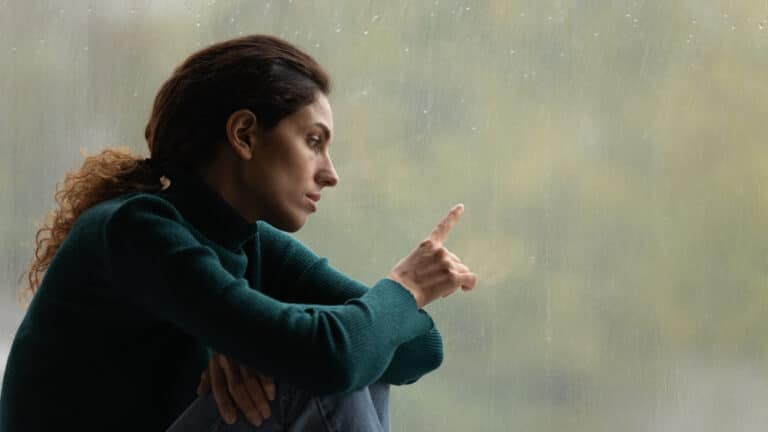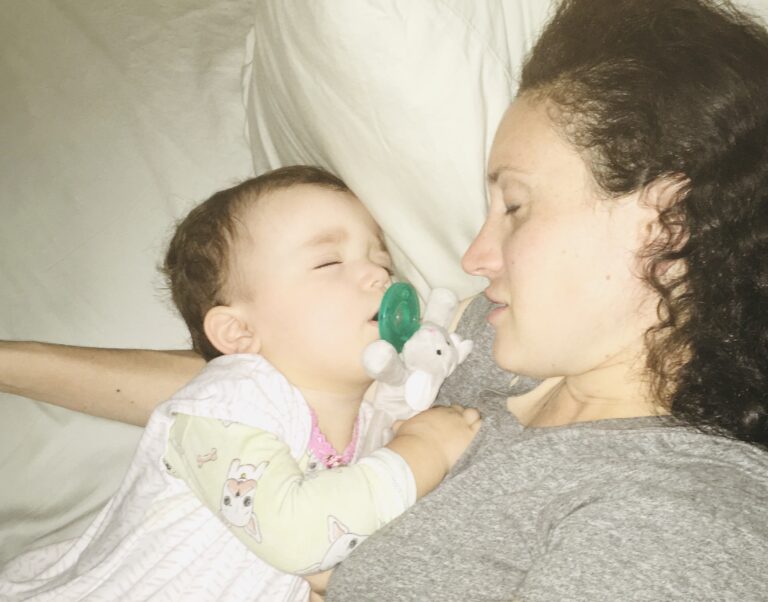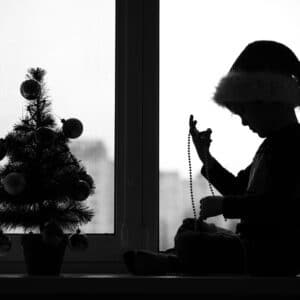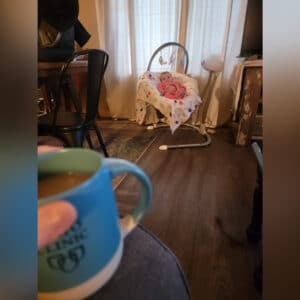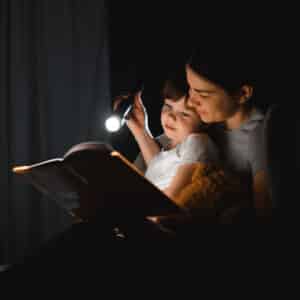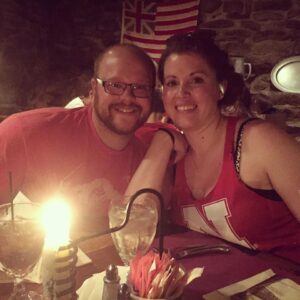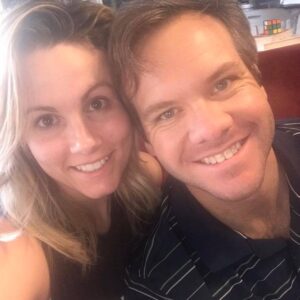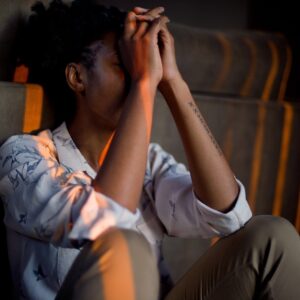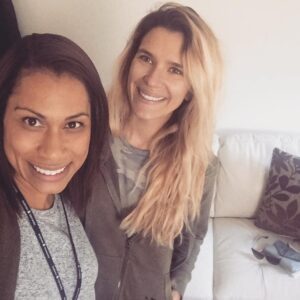Shut Down
I leaned over the sleek sink of our hotel, spreading pink lipstick across my lips, then sweeping bronzer beneath my cheekbones. Clay was turning forty, and we were staycationing at The Ritz, getting ready for dinner and drinks with friends at the fancy restaurant downstairs. Other than the momentous—and somewhat nerve-wracking!—occasion of my husband turning the big 4-0, it felt mostly like any other early March. The regular sounds of sports analysts placing their bets on college basketball teams drifted from our hotel bedroom, where Clay sat watching TV.
But as I reached across the counter for my perfume, my arm froze. Clay had switched from basketball to the news. I couldn’t make out everything the reporter said, but I was almost certain he’d said “cases in the U.S.” They were talking about that virus again. The “Corona” virus, they called it. I remained frozen for a long moment, so quiet that I could hear the thud of the faucet, dripping ever so slightly onto the porcelain.
The virus wasn’t in Dallas—was it?
I slipped on one stiletto, then the other, shaking off my worries. Our friends were waiting for us downstairs, and I was ready to celebrate.
***
At dinner, seated in Fearing’s elegant yet robust atmosphere of good cheer, we talked only briefly about “The Virus.” My friend whose father is a doctor said her family was not concerned. As a group, we did some thinking-out-loud about any of us who may have loved ones with “pre-existing conditions”—but nothing seemed too significant. “It’s like getting a cold,” my friend explained. We couldn’t imagine that a virus with a 99 percent recovery rate was anything that could be too impactful. I looked around the bustling restaurant. A local private school, ESD, was hosting its auction at The Ritz that night, and the restaurant bar was more crowded with decked-out couples than I’d ever seen before. Soon our dinner came sizzling to the table, and we raised a toast to the newly-minted old man. In my secret heart, I knew how hard things had been for my family recently. But things would be OK. I was sure of it.
Three days later, the world shut down.
Just a Little Farther Now
Do you remember being a child, learning to swim? Your mother said, “Swim to me . . . almost there!”—only to back up farther? It was anxious work being pushed further than we intended to go, but at least in that scenario, we knew the adult was in control of the situation.
In the weeks following that fateful first wave of Coronavirus hitting the states, we kept telling our three children, “Just a little longer . . .” It would be “just a little longer” until they could see their grandmothers. “Just a little longer” until they could play with Sydney next door. “Just a little longer” until we could go to the park and be around other kids.
One day, we fought the “put your shoes on” war and gathered the kids for an aimless family drive (aimless because every place in town was shut down except grocery stores and pharmacies). Johnny, who was four at the time, had a particular distaste for shoes. When we’d been driving a while, observing the ghost town Dallas had become, Johnny asked where we were going. When I explained we were just taking a drive, his green eyes flared. “Well, I didn’t put my shoes on for THIS!”
But that was exactly what he’d done, and what we all did every single day. We woke up every morning and put our shoes on . . . for “this.” We kept telling the kids it would be “just a little longer,” but they grew wiser. It didn’t take long for them to see we were only pretending to know when life would return to normal—or worse, that we thought we knew but were constantly mistaken.
Visual Images
As the days stretched into weeks and then months, there were silver linings to the pandemic, sweet as honeysuckles on fences and bright as the sunny days of April and May. Unbound by the walls of a school building and eager to go outside, my children and I experienced the gentle weather and sweet smells of springtime in Texas like never before. It was a time of sidewalk chalk and long walks. Perched in neighbors’ windows were teddy bears and other stuffed animals for us to see as we walked by. We put lovies in our windows as well. The kids needed these images of comfort. After all, they were beginning to see many other images, far from comforting.
One day, my 6-year-old, Wes, was lounging on his favorite armchair in the den while I cleaned up lunch plates, too distracted by the clatter of dishes to notice the drone of the news, which I’d left on the television.
“Mom,” I heard him say. He probably said it three times before I looked up. On our big-screen TV, a line of vans moved slowly down a long, dark street. Wes said quietly, “They put dead bodies into those trucks.”
My heart skipped, and I felt the sting of an “oh crap” parenting moment. The dead were outnumbering hospital capacity in coastal cities, and yes, my kindergartener was correct: These refrigerated vans were makeshift morgues. I remembered to turn the news off after that.
One day crawled into the next and slowly the hot Texas summer arrived. But the higher temperatures didn’t mitigate Covid as we’d hoped, and the world remained shut down and uncertain. In June and July, we found some entertainment through “making reservations” at the local pool, where things seemed almost normal for a couple of hours, despite the mandated sparsity. We even snuck in a road trip to a Texas beach, hand sanitizer and face masks in tow. But as the heat grew more oppressive and the pool lost its novelty, my silent prayer became, increasingly: Please let school start next month—the children need normalcy again.
The next month, school did, in fact, come. But normalcy? Not so much. The visual of the kids’ first day back to school may be the Covid image I’ll always remember the most. Sure, I’d become accustomed to seeing people wearing masks around town. But this was different. This was a sprawling schoolyard filled with children in masks as far as the eye could see. The sight was so striking that my eyes prickled with unexpected tears. I understood the mask mandate, and I was grateful for the opportunity to send the kids back to school in the safest manner possible, but it just didn’t look right. It looked more like the scene of an emergency than the first day of school. I guess it was both. I gave my kids a gentle push and sent them into the masked masses, where teachers with walkie-talkies and face shields directed them into a sterile building.
Pile-On
I’m not sure who was living their best life before Covid struck the states in March, but for my family, 2020 sucked from the very beginning. My dad, the children’s grandfather, had died in January after many high-stress visits to the emergency room. Also around that time, we’d had to break the news to the kids that they were being rezoned to a new school the following year. Their first experience with death in the family, coupled with the daunting task of starting over at school, was a pile-on I hoped to defeat with fun family outings and my best efforts to make new friends at their new school.
Then came Covid.
Suddenly the “new normal” we were already trying to achieve on a personal level was joined by the “new normal” the world at large was struggling to find. Suddenly our advice to “be friendly and make new friends” was tempered with “but wear your mask and keep your distance.” To our regular scoldings of “Don’t hit your brother,” and “Don’t play with your food,” we added things like, “Don’t touch that button!” and “Do not drink from that water fountain.” When we finally visited my widowed mother, I snapped at her and my kids simultaneously when she let them play on her iPad. “Mother!” I shrieked. “Screens are full of germs!”
What could anyone make of this new reality?
Previously innocent interactions became fumbles for my children in a world ruled by Covid. And I still couldn’t tell them when things would become normal again. My wishy-washiness and decision fatigue must have driven them crazy. Some days I’d let them play with other kids and hug their Gigi. Other days, when I read a daunting article or had a bad feeling, I’d keep our family shut in.
It was around that time I began noticing signs of anxiety in my children.
Winter Storm
Today, it’s almost exactly a year after that fateful day in March, not long after my husband’s 40thbirthday celebration. The air is a balmy 75 degrees, and the signs of spring are sprouting in neighborhood gardens. It’s hard to imagine that only a few weeks ago, we experienced a snowpocalypse that nearly took out the entire state of Texas. What began as a fun “snow day” evolved into a power crisis that left our family without heat for days. Then, when the power began to function again, we discovered that our city’s water was contaminated due to shortages during the storm. A sweet new neighbor happened to have a supply of coveted bottled waters, and she gave us some so my kids could use it to brush their teeth.
Except Wes kept forgetting. He would accidentally rinse and spit with sink water, only to panic afterward that he had contaminated himself.
“Just hang in there a little longer,” I told him. “It will only take the city a couple more days to clean the water.”
My 9-year-old son overheard me and interjected, “Well—supposedly.”
The boys gave each other a knowing look. This new water disaster, they believed, could go on forever, despite my reassurances. What was life, anyway, if not a series of disasters, one after another?
They were surprised when the boil-water order was lifted, as I’d promised, just a few days later. Their reaction was very telling to me. Read any list of symptoms, and it will tell you that Covid-19 can cause fever, headaches, and coughing in young children. What about distrust? What about anxiety? What about cynicism?
I’m not trying to sound self-pitying about my family’s pandemic experience. Certainly, others had it far worse. Were we destitute? No. Were we unhealthy? No. Were there silver linings, learning moments, more family time spent together, and a deepening of our faith during these trying times? Yes. But after spending an entire year in survival mode, constantly reminding myself of all these blessings, I look back on our year and I have the strong urge to tell the truth—the real truth about how Covid impacted our family:
It. Has. Been. Really. Hard. On. All. Of. Us.
Really hard. There, I said it. We trudged forward like good little soldiers. On social media, we posted front-porch pictures, smiling beach photos, and videos of our backyard Easter egg hunt. Anytime a friend asked how we were, I said we were doing pretty well, and I really thought I meant it. We were healthy, after all, and we had each other. But the pressure was cooking underneath our smiles, and a restlessness was ripening in my children.
Somewhere along the way, one of my sons starting doing this little hum under his breath. Somewhere along the way, another one of my sons needed me to stay in his room until he fell asleep at night—and then again when he woke up with nightmares. The tapping of little fingers; the banging of knobby knees against the dinner table; that nervous humming noise, somewhere in the background. There was a new rawness to their emotions, a growing quickness to tears. A return, at times, to throwing fits. Exposed to a reality too mature for them, they were acting younger than they were. This was anxiety, and I recognized it.
I’m far from a psychiatrist, but I’m predicting that this worldwide pandemic that came out of the blue will never quite disappear back into it. Our children have been through stress on a global scale, and that’s a lot to add to the ordinary struggle of growing up. I’ve already put more work into my children’s mental and spiritual health than I would have in a world where Covid didn’t exist, and I hope that the coping strategies I’m teaching them in their youth will solidify as they grow older and serve them well down the road.
And I hope my children never take the simple beauty of social interaction for granted again. I hope if nothing else comes out of this long-endured crisis, it’s that we’re all a little more aware of just how special the people in our lives are, big and small . . . of just how much we need other people.
One day, our kids will reunite with their grade-school peers and have a special bond with those who sat in class with them this year, masked and on opposite sides of plexiglass shields. On the inside, to one degree or another, they’re all feeling the same things, no matter how separated they feel.
I wanted to end this reflection with the truest truth—that this anxiety-rousing pandemic has just plain sucked. But to my surprise, a Covid-19 cliché is sneaking up on me as worthy of my ending. I can’t help but think of all the love we’ve experienced—the chats we’ve had over shared backyard fences; the supplies we’ve left on each other’s porches when grocery store shelves were sparse; the teddy bears in the windows; the Zoom calls filled with the faces of friends, old and new . . .
. . . the shared process of life slowly inching back to “normal.”
We really are all in this together.
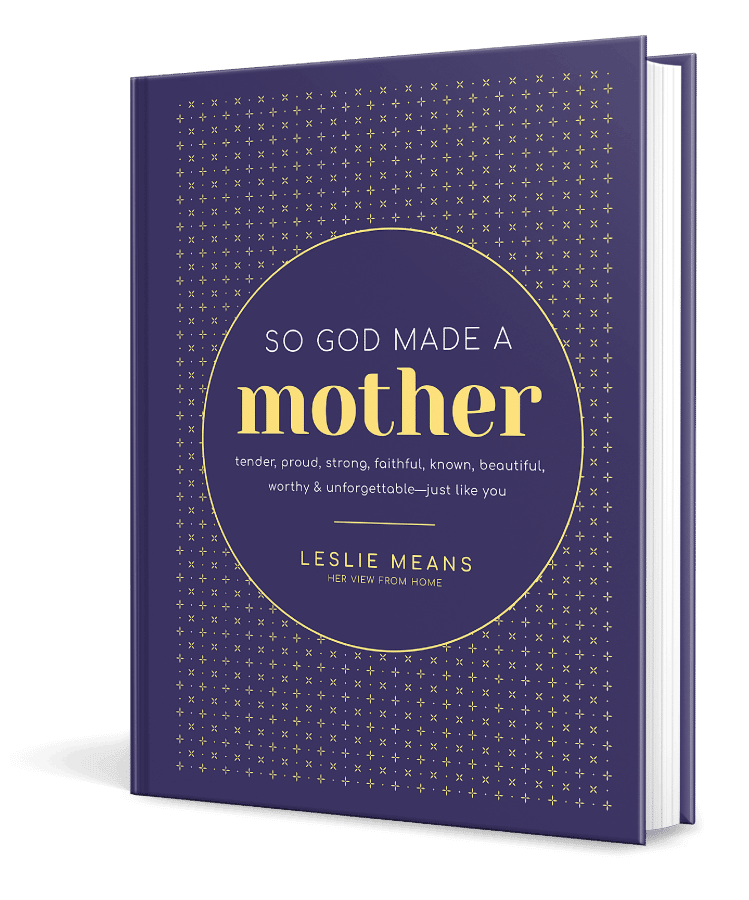
If you liked this, you'll love our book, SO GOD MADE A MOTHER available now!
Order NowCheck out our new Keepsake Companion Journal that pairs with our So God Made a Mother book!
Order Now